Z is for Moose is a rare alphabet book that mixes humor with letter/sound relationships. Kelly Bingham has delivered a delightful book that your young readers will request repeatedly. Zebra is trying to stage a production about the letters and sounds of the alphabet. “A is for apple. B is for ball.” How hard can […]
To continue working with the new vocabulary from the second reading find a place in your home to display the list of selected vocabulary words. This list can be on the refrigerator, in the hallway, or anyplace in your house that has high visibility. This word wall can be informal. It can be a large […]
Eutopia This site has many resources that support the Practickle approach. Pinterest So many contributions from teachers. Easy for parents to navigate. Resources are easy for parents to use. No Time for Flashcards So many links and ideas for parents and caregivers. PBS Kids Great resources. Many link to the PBS series for kids. Lots […]
“Comprehension Instruction That Works” Michael Pressley wrote this article and the one below. He compiles research and then summarizes it in an easy to read-and-understand style. The Best Practices that he describes are divided into three groups: World Knowledge (referred to in the Practickle guides as Activating Prior Knowledge), Active Comprehension Strategies, and Monitoring. […]
“I’m too busy to use Practickle!” Consider these opportunities: Have a play date with other children. Enrich the play time by using the Practickle book and guide with the group. It will enhance your child’s comprehension by hearing the inferences, observations, and questions of other children. Don’t worry about using the entire guide. Just […]
*Curriculum is not to be confused with standards. Standards is the “what” to teach. Curriculum is the “how” to teach (teaching strategies and materials). The Practickle reading guides are a unique combination of Reading Comprehension Best Practices, the national Kindergarten through Grade 2 English Language Arts Standards, and brain research. Instructors spend significant time gathering […]
Kindergarten readiness is determined by evaluating the emotional, academic, and social skills necessary to succeed in a formal educational setting. Brain research reveals the importance of early experiences in developing the brain’s future capabilities. Research, also, reveals that it takes several years to develop the brain circuitry necessary for deep comprehension. Practickle’s guides are based […]
The answer to that question depends on who you ask. Parents tend to look for preschools that highlight the academic skills that are needed to succeed in most kindergartens. Educators tend to look at a preschool environment that nurtures the whole child, viewing social and emotional skills as equally important as physical and cognitive skills. […]
What is Practickle? Practickle is an educational opportunity for family, care-providers, and educators interested in using story-time for comprehension practice that is before and beyond the classroom. Practickle realizes that not all parents and care providers are trained teachers and don’t have time to research both quality literature and Best Practices in comprehension for our […]
Each of Practickle’s reading guides have a single standards-based focus: The guide for each First Reading is scripted page by page using the information in features such as illustrations, photographs, and charts,tables or graphs to activate the prior knowledge of the listener and to make inferences about the story elements. The guide for each Second […]
An article from the Los Angeles Times reported that preschoolers, ages 3 – 5, who took a midday nap of an average of a little longer than an hour performed better on memory tasks that day and the next day than did kids who didn’t nap. Scientists reporting recently in the Proceedings of the National […]
In the first 2,000 days of life there is an explosion of growth in your brain that stays with you for the rest of your life. You learn more from 0 to 5 years of age than in any other five year period in your life. By the age of 5, 92% of the brain’s […]
Teaching kids how to hear, identify and manipulate sounds of the alphabet is an important first step in reading readiness. So, when you’re in the car assume the role of the teacher and resident brain expert. Play a rhyming game: “I say bat. You say _________.” “I say bed. You say _________.” Your […]
As an ACTIVITY OPTION, I frequently construct very simple graphic organizers to help your young reader get a basic understanding of how to organize information. A graphic organizer is a visual aid helping the reader to see the relationships between pieces of information. These visual arrangements help the reader and listener to comprehend and retain […]
As the school year begins, the few hours before bedtime become even busier for families with children in preschool or school. My granddaughter has started a preschool program that requires “homework.” Izzie’s school wants her reading each evening. The next day the students talk about what they read. This reading assignment is perfect for the […]
Two of Practickle’s objectives are beautifully brought to life in Laura Vaccaro Seeger’s award winning book, green: opening your child’s imagination to the high quality art in picture books creating images that expand your child’s imagination As she creates images that broaden the concept of green into both natural and humorous shades, your listener […]
…ask them if it is “Standards-based”. Sounds a bit intimidating, doesn’t it. “Standards-based” means that your child’s pre-kindergarten experience will build a foundation in both decoding (phonics) and comprehension that will guarantee success in any kindergarten classroom. The “standards” are a group of grade-level expectations for students in grades K – 12. Most of the […]
Think about how many times you read and reread a recipe. Why do you play and replay a song that touches you? How many times have written and rewritten an importand personal letter or paper? Promoting the repeated connections with a quality or important piece of literature or informational text develops a deeper level of […]
As the school year begins, the few hours before bedtime become even busier for families with children in preschool or school. My granddaughter has started a preschool program that requires “homework.” Izzie’s school wants her reading each evening. The next day the students talk about what they read. This reading assignment is perfect for the […]
With over 90% of the brain’s capabilities developing before formal schooling starts, let’s make sure that we’re providing the best literacy experiences we can for our youngest readers by sharing books of the highest quality. Eric Carle’s many books provide that quality from the beauty of his illustrations to the structure of his texts. Mr. […]
Pen pals! An old idea given a new dimension through the program: in2Books. Check out it’s website: http://in2Books.com. This carefully designed program provides intermediate students with one-on-one opportunities to discuss ideas about books with a pen pal who has read the same book. You’ll notice that the program is developed for classroom experiences. However, the […]
At this time of year, parents are looking for effective ways to get meaningful information about how their children are really doing in school. Here are a few hints to guide the building of discussions that lead to important details about the school day and the emotional barometer in your child’s world. Pick a time […]
At this time of year, parents are looking for effective ways to get meaningful information about how their children are really doing in school. Here are a few hints to guide the building of discussions that lead to important details about the school day and the emotional barometer in your child’s world. Pick a time […]
THIRD READING: ANALYSIS – SWIRL BY SWIRL: SPIRALS IN NATURE For the Third Reading, read the book all the way through. Share the reading responsibilities with the listener any way you wish. You may wish to alternate reading pages, or have the child retell the story. If your child is retelling the story, help […]
SECOND READING: TEXT AND VOCABULARY – SWIRL BY SWIRL: SPIRALS IN NATURE The sparse text is free-verse poetry. We’ll focus on use of the ellipsis (…) to tell us that the idea is either unfinished or the reader is to make a long pause . There is great vocabulary to describe the spirals. *Ask […]
FIRST READING: ILLUSTRATIONS – SWIRL by SWIRL: SPIRALS IN NATURE The fun begins immediately! Starting with the cover, you can begin to look for spirals (a coil made around a fixed point that moves farther away from the point or closer to it). *If the pages are not numbered, page 1 is the first […]
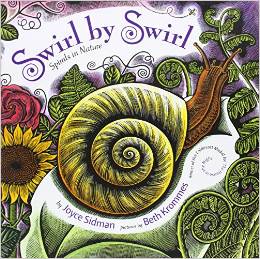
Swirl by Swirl: Spirals in Nature by Joyce Sidman Ms. Sidman organizes the spirals of the natural world into categories. Some of her categories are: spirals that are snuggling shapes for sleeping, strong shapes for defense, or shapes that reach out to anchor an organism or help it move. The text during the story […]
THIRD READING: ANALYSIS – THE DAY THE CRAYONS QUIT Share the reading responsibilities with the listener any way you wish. You may wish to alternate reading pages, or have your child retell the contents of each crayon’s letter. If your child is retelling the letter, help your child use the details in the illustrations […]
FIRST READING and SECOND READINGS: ILLUSTRATIONS, TEXT and VOCABULARY – THE DAY THE CRAYONS QUIT The format of this book requires a unique combination of First and Second Readings. Each full-page spread contains the illustration about and the letter from each of the colors in Duncan’s box of crayons. As you open to each […]
THIRD READING: ANALYSIS – OLIVIA For the Third Reading, read the book all the way through. Share the reading responsibilities with the listener any way you wish. You may wish to alternate reading pages, or have the child retell the story. If your child is retelling the story to you, help your child use […]
SECOND READING: TEXT AND VOCABULARY – OLIVIA During the reading of the text, look for information to answer your questions. If you didn’t have any questions, don’t worry. Connect the information in the text to your inferences about the illustrations. *There are a few vocabulary words that are highlighted. *Ask the questions after you […]
FIRST READING: ILLUSTRATIONS – OLIVIA The purpose of the illustrations is to give you information about the main character, Olivia. Mr. Falconer uses quite a bit of humor in them which both reader and listener will enjoy. As you move through the illustrations, you’ll be talking about Olivia’s personality traits, her likes and dislikes, […]
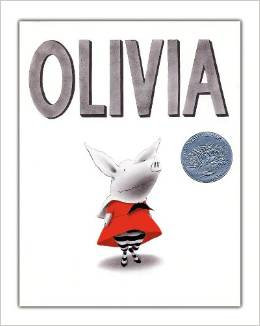
Olivia by Ian Falconer Do you know a precocious child that tires you out by the end of the day? Author and illustrator Ian Falconer knows one: his niece, Olivia. Mr. Falconer’s simple text and hilarious illustrations will capture both the reader and the listener. The adults will laugh at Olivia’s stupendous sand castle, as […]
THIRD READING: ANALYSIS – THE TALE OF PETER RABBIT During the Third Reading, your child and you have prior knowledge of how the text and picture fit together. Now, your interaction with the story will move to a higher level of thinking. The activities and questions below are considered “higher order thinking questions.” Activities […]
SECOND READING: TEXT AND VOCABULARY – THE TALE OF PETER RABBIT As you read the text, you’ll notice on each page that Miss Potter has skillfully matched her illustrations to the text. There are some great vocabulary words to highlight. Look for clues in both the illustrations and the text that might help to […]
FIRST READING: ILLUSTRATIONS – THE TALE OF PETER RABBIT During the First Reading, your child and you will study the illustrations to infer what they tell us about the story. You will look at the evidence in the prints to form predictions about who the characters are, what the problem in the story is, […]
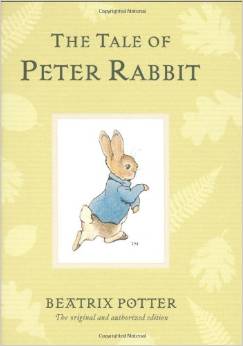
The Tale of Peter Rabbit by Beatrix Potter This classic children’s book is one of the best selling picture books of all times. First written by Miss Potter in 1893, her familiar images of Peter Rabbit have been commercialized in many different formats, such as: games, dishes, wallpaper, stuffed animals, and bed linens. In fact, […]
THIRD READING: ANALYSIS – EMERALDALICIOUS During this reading, your child and you have prior knowledge of how the text and illustrations fit together. Now, your interaction with the story will move to a higher level of thinking. The activities and questions below are considered “higher order thinking.” Activities and questions like these give the […]
SECOND READING: TEXT AND VOCABULARY – EMERALDALICIOUS As you read the text, you’ll discover information to evaluate your First Reading predictions. Take time to discuss how the text explains the illustration. Talk about some of the vocabulary words that you’d like to highlight. Words such as strolling will be fun to add to your […]
FIRST READING: ILLUSTRATIONS – EMERALDALICIOUS During the first reading, you’ll be forming inferences and making predictions. You’ll be inferring what the characters might be saying to each other and predicting what the magic wand will make next. You’ll enjoy studying the wand’s magical creations. The illustrations are full of old objects that can probably […]
THIRD READING: ANALYSIS – MILLIONS OF CATS During this reading, your child and you have prior knowledge of how the text and illustrations fit together. Now, your interaction with the story will move to a higher level of thinking. The activities and questions below are considered “higher order thinking.” Activities and questions like these […]
SECOND READING: TEXT AND VOCABULARY – MILLIONS OF CATS As you read, you’ll discover whether the inferences and predictions that you made based on the illustrations match the text . There are some great vocabulary words to highlight. Look for clues in both the illustrations and the text that might help to explain the […]
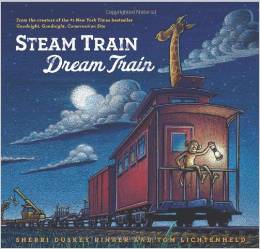
STEAM TRAIN, DREAM TRAIN by Sherri Dusky Rinker “Through the darkness, clickety-clack. . . coming closer, down the track. . . hold your breath so you can hear huffing, chuffing drawing near.” The comforting rhyme and rhythm of the book’s first page draws you into this soothing bedtime read-aloud. Ms. Rinker combines poetic form, […]
FIRST READING and SECOND READINGS: ILLUSTRATIONS and TEXT – WHAT IF YOU HAD ANIMAL TEETH? The format of this book requires a unique combination of First and Second Readings. One side of each full-page spread contains a photograph of a wild animal and factual information about the animal’s teeth. The other side contains a humorous […]

During the first reading, your child and you will study the illustrations to infer what they tell us about the story. You will look at the evidence in the prints to form predictions about who the characters are, what their problem is, and how a solution is reached. You will be repeating the questions that […]

by Wanda Gág Wanda Gág’s classic Millions of Cats was a Newbery Honor Book in 1929. Millions of Cats is one of the oldest picture books still in print. Ms. Gág’s simple black and white illustrations accompanied by hand-lettered print give the comfortable impression of an old folktale. The ideas of love, beauty, and happiness will lead to questions […]

THIRD READING: ANALYSIS – Alexander and the Terrible, Horrible, No Good, Very Bad Day During this reading, your child and you have prior knowledge of how the text and picture fit together. Now, your interaction with the story will move to a higher level of thinking. The activities and questions below are considered “higher […]

SECOND READING: READING THE TEXT – Alexander and the Terrible, Horrible, No Good, Very Bad Day A you read the text, you will notice that some of Judith Viorst’s sentences are very long. Read them as she has them written. Only pause when you come to a comma (a short pause) or a period […]

FIRST READING: ILLUSTRATIONS – Alexander and the Terrible, Horrible, No Good, Very Bad Day During this reading, you will be focusing on the pen and ink illustrations. Older editions of the story are in black and white. A special edition was done in 2009 in which Alexander is in digitally enhanced color. As […]

by Judith Viorst As you read about Alexander’s day, both your listener and you will empathize with Alexander. Many times, you’ll being saying, “Oh, no! Poor Alexander.” Or “I know how he feels.” Don’t worry. No serious problems befall Alexander. His day is full of little things that add up to make him feel bad […]
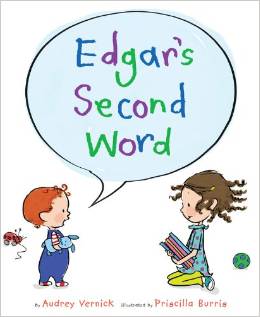
Edgar’s Second Word by Audrey Vernick “The books Hazel planned to read to her someday-brother waited on a special shelf. Every night, she imagined the warm-love weight of him on her lap, and how they’d study each page together.” So begins Audrey Vernick’s new book, published in June of this year. Hazel […]
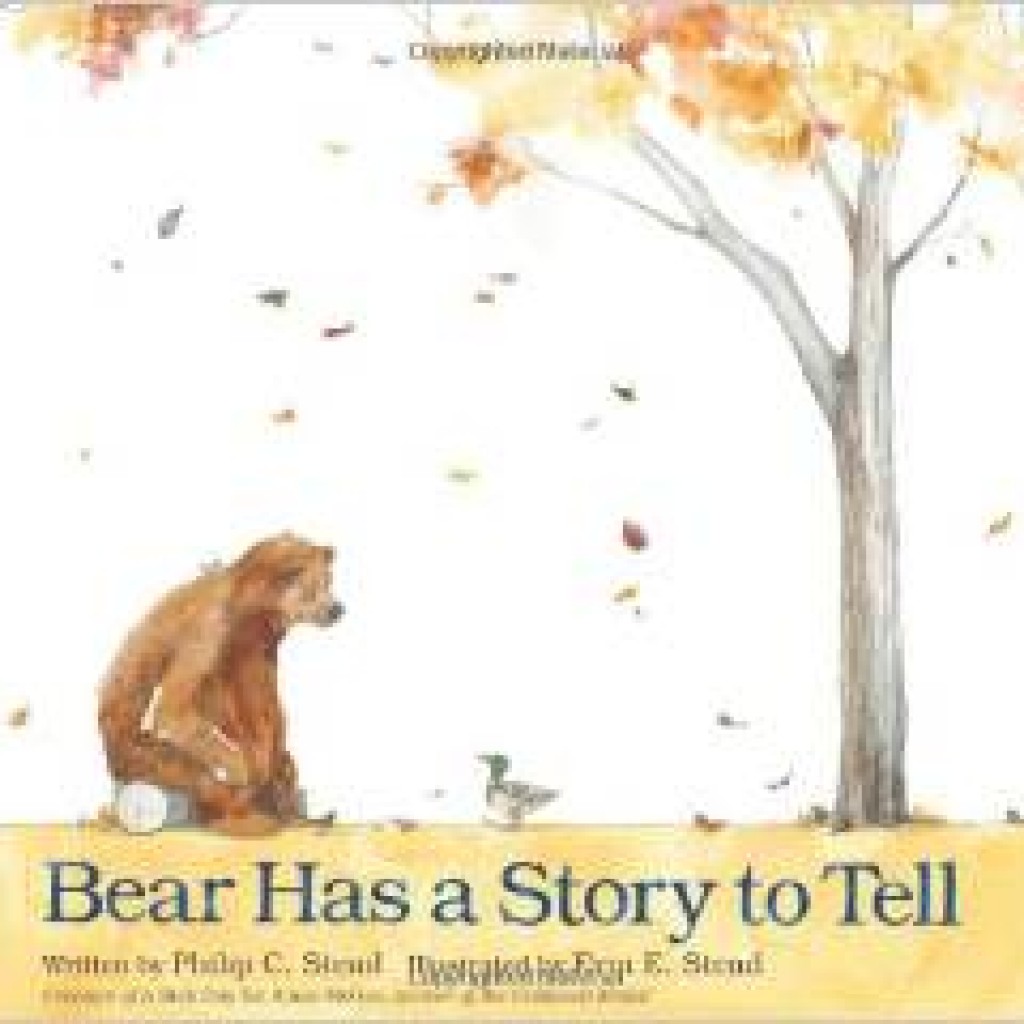
Bear Has a Story to Tell by Philip C. Stead and Erin E. Stead As you look at Practickle’s past reading selections, it is obvious that we love the friendly stories of Philip Stead and the warm illustrations of his wife, Erin. In this story, Mr. Stead uses his characters to model the meanings of loyal […]
I am drawn to articles with educational statistics on how well our children are doing in school. Here are a few that have caught my attention, because they are supported by numerous educational resources: 40% of errors on standardized math tests are related to reading errors due to weak critical reading skills and misunderstanding vocabulary. 60% […]
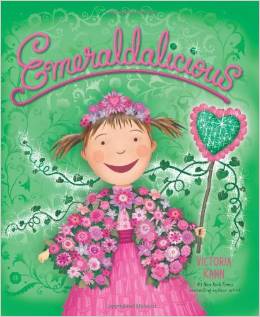
Emeraldalicious by Victoria Kann Emeraldalicious is a delightful fantasy with elaborate mixed-media illustrations. Ms. Kann’s illustrations are full of objects that swirl through the air to create thrones, castles, costumes, and vehicles. About halfway through the First Reading, your reader and you will realize that the wand has magical powers. You’ll start to ask, “What will the […]
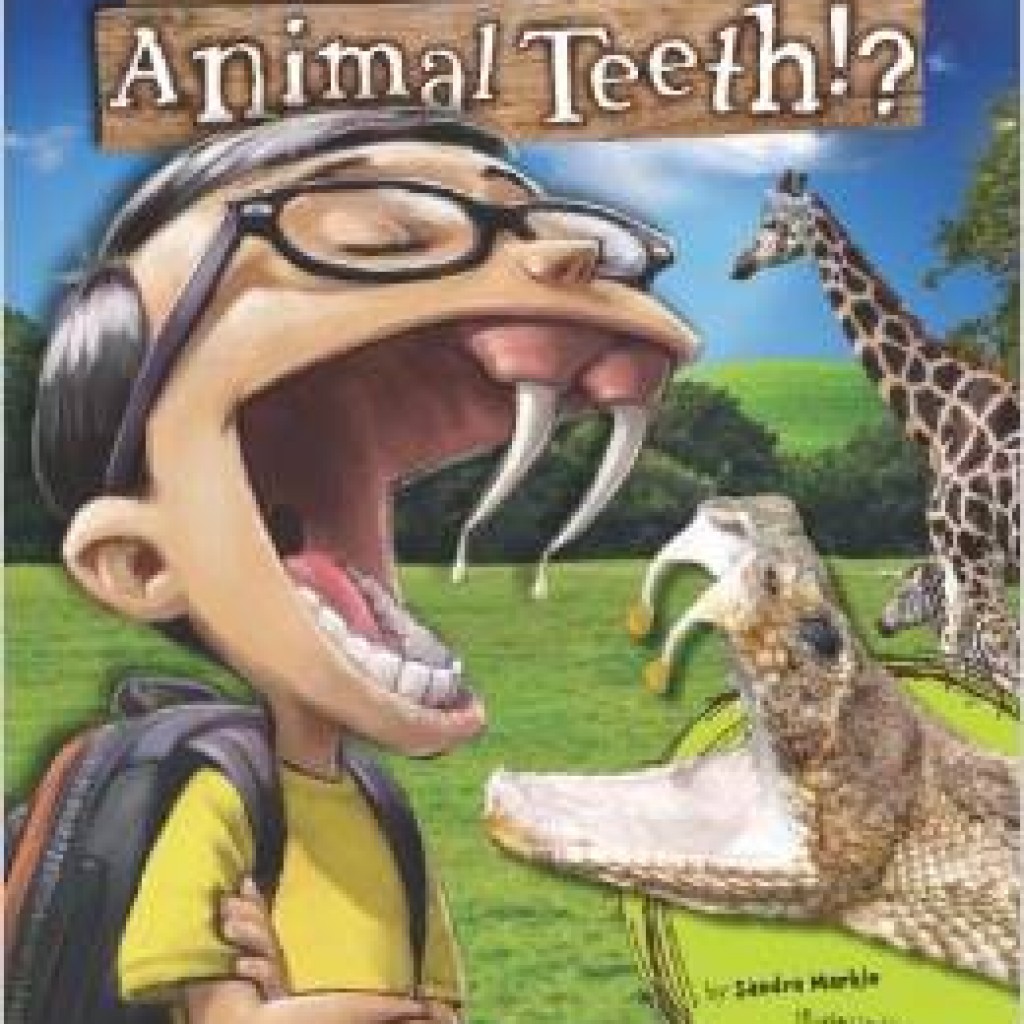
If you could have any animal’s front teeth, whose would you choose? WHAT IF YOU HAD ANIMAL TEETH? takes children on a fun, informative, and imaginative journey as they explore what it would be like if their own front teeth were replaced by those of a different animal. Featuring a dozen animals (beaver, great white shark, narwhal, elephant, rattlesnake, naked mole […]
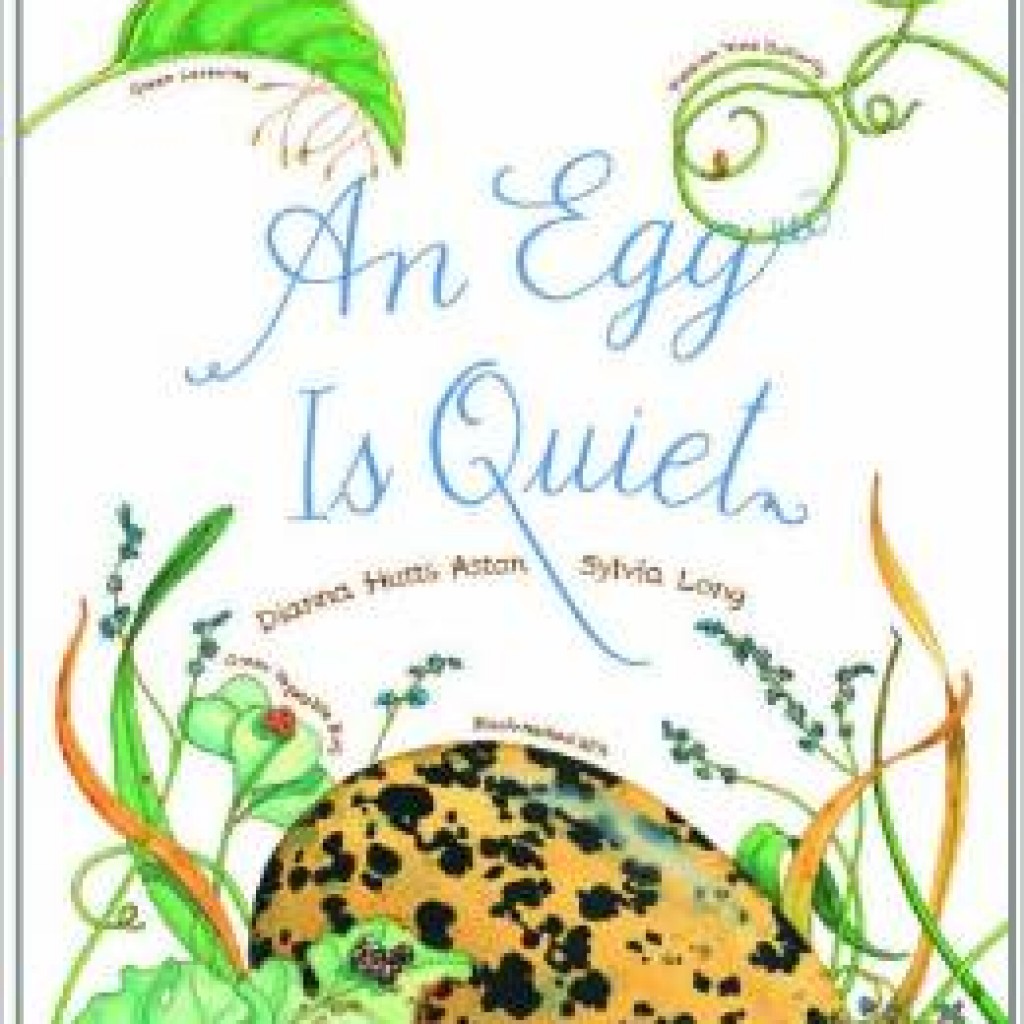
One of Practickle’s goals is to feature quality nonfiction (informational) books. An Egg Is Quiet is a highly acclaimed award winner, receiving praise for both its informational content and its beauty. If you enjoyed last month’s informational book selection, Swirl by Swirl, you will enjoy this book. Both books use magnificent illustrations to highlight the diversity in […]
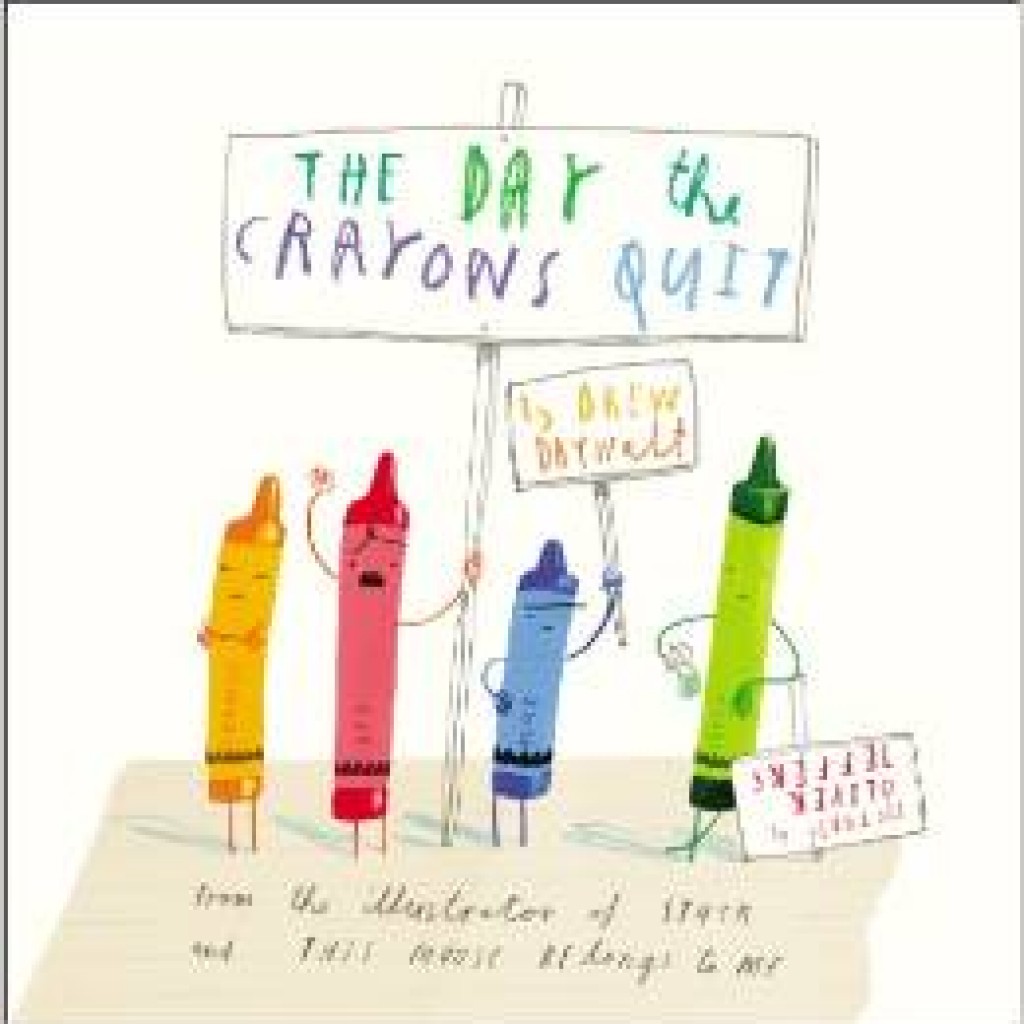
The Day The Crayons Quit by Drew Daywalt Duncan opens his box of crayons at school one day to find a bundle of letters written to him by none other than his crayons. In each letter, a different, distraught crayon explains its hurt feelings and frustration at how it is being misused, overused, […]
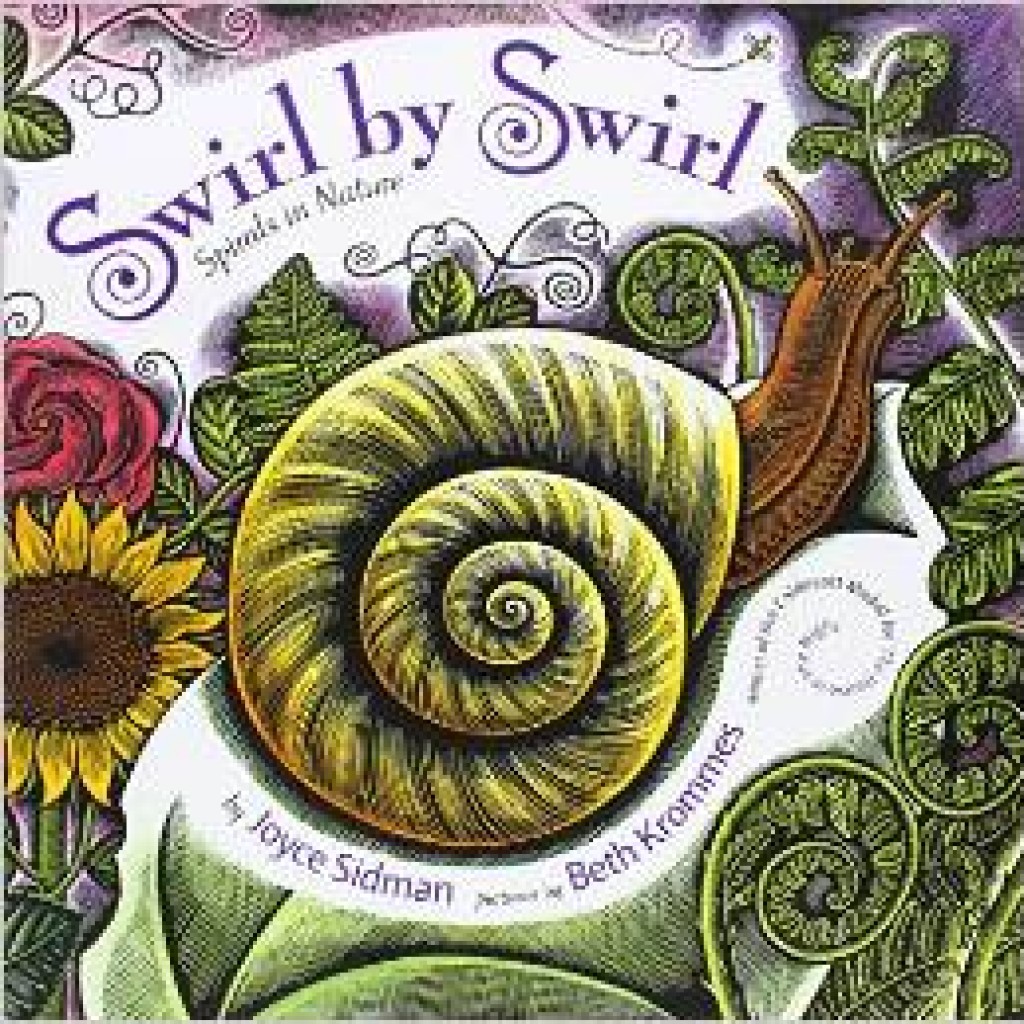
A Caldecott medalist and a Newbery Honor-winning poet celebrate the beauty and value of spirals.What makes the tiny snail shell so beautiful? Why does that shape occur in nature over and over again—in rushing rivers, in a flower bud, even inside your ear? With simplicity and grace, Joyce Sidman’s poetry paired with Beth Krommes’s scratchboard […]

Journaling after story time is a great way to help reinforce main ideas and themes you and your child have just discussed together. And fear not: Journaling isn’t just for children who can write in complete sentences! Drawing pictures is a form of journaling, as well as having your child share thoughts out loud while […]
“Feathers can be warm like a blanket…..or cushion like a pillow.”Ms. Stewart’s simple text explains how sixteen birds from around the world use their feathers from the commonly known purposes of feathers to the unusual, “….. sprinting across the snow like snowshoes”. Her selections are common birds, such as jays that we might see in […]
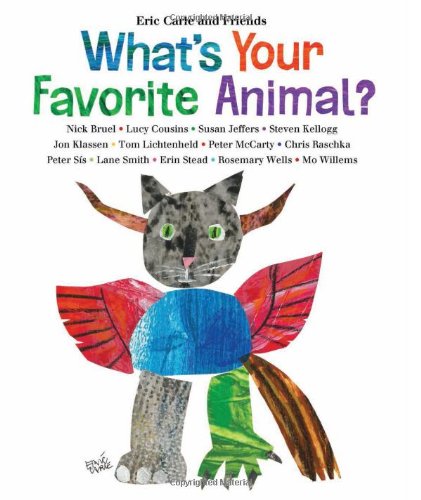
ABOUT THIS BOOK:WHAT’S YOUR FAVORITE ANIMAL? by Eric Carle Another great book idea from Eric Carle! Mr. Carle has compiled wonderful illustrations from fourteen award-winning picture book artists who responded to his question, “What’s your favorite animal?” Each of the illustrator’s favorite animal is shown on a double-page spread. In addition to the different medium […]
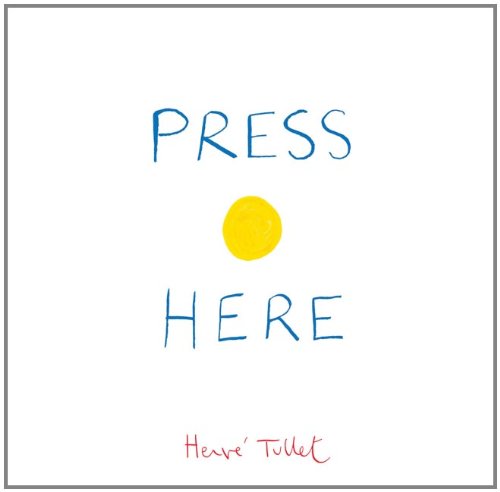
ABOUT THIS BOOK: PRESS HERE by Herve′ Tullet Educational journals and the mainstream press are full of articles that stress the importance of a wide range of reading experiences at an early age. Included in this range of experiences is the need for children to comprehend a variety of text structures. Press Here integrates a […]
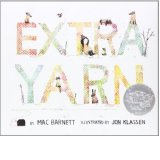
As I read Extra Yarn, I was surprised at the personal connections and memories that were awakened by the creative illustrations and text. One of my memories I shared with my grandchildren was that my grandmother taught me to knit. My first project was a scarf. However, my grandmother’s visit ended before I was done […]
At this time of year, parents are looking for ways to get meaningful information about how their children are really doing in school – more than “just fine!” Here are a few hints to guide the building of discussions that lead to important details about the school day and the emotional barometer in your child’s […]
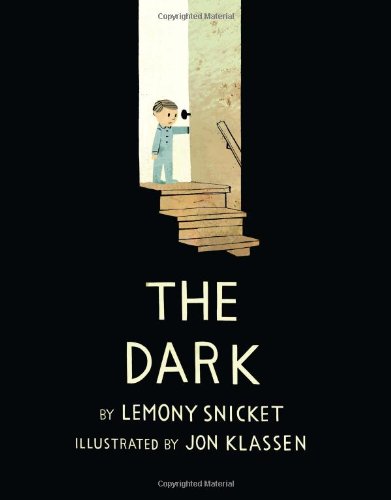
To allow the brain to focus on the information in the illustrations, this reading will look only at the illustrations and the information they provide to the reader. There are no right or wrong answers in this reading. Enjoy the questions we have provided and feel free to create your own. If the pages are […]
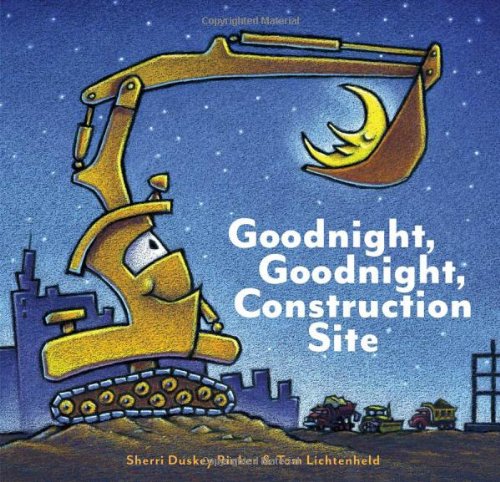
For the Third Reading, here are two suggestions to enhance the listener’s comprehension and help analyze the story: ~ Focus on the rhythm and the rhyming words. Leave out the second rhyming word, and have your child supply it. (Similar to the procedure suggested in the Second Reading.) ~ Dramatize the story. Create different voices for […]
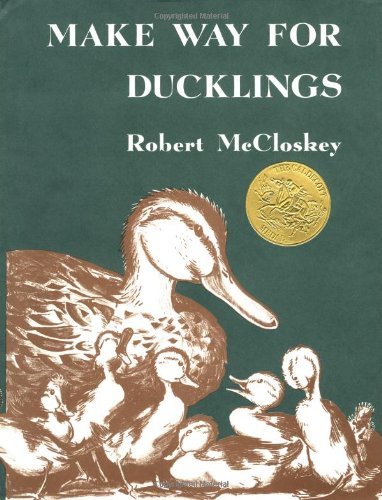
During the Third Reading, enjoy reading the entire text together. Either take turns reading pages to each other or have your child be the reader and you be the listener and questioner. As you go through the text, have fun dramatizing both the dialogue and the sounds that might occur in the setting. DISCUSSION OPTIONS: […]

During the Second Reading, you will: ~ read the text. ~ ask clarifying questions. ~ focus on vocabulary building. The text contains great vocabulary building opportunities. As you read the text, there will be words that are explained by the illustration and the text working together. There will be words that you will need to explain […]

For this First Reading, remember this session should last about 20 minutes. Adjust the length of time to your reader’s attention span. Don’t feel that you have to use all the questions. Remember the two basic questions that provide the structure for making inferences, predictions, and conclusions. ~What do I see in the illustration? This opens […]

During the Second Reading, you will read the text and emphasize vocabulary. Feel free at any time to connect inferences about the illustrations from First Reading with the text. We will be looking at all the patterns that the author has built into the text. Pages 1 – 4: Notice the rhyming scheme and the […]

When viewing illustrations, the brain follows steps similar to those described in the ABOUT THIS BOOK: ~What do you see? (gather evidence from the illustration) ~What do you think is happening? TIP: FEEL FREE TO ENGAGE IN DISCUSSION WITH YOUR LISTENER. THIS NEW TYPE OF “READING”MAY TAKE SOME PRACTICE BEFORE THE LISTENER IS COMFORTABLE CHATTING […]
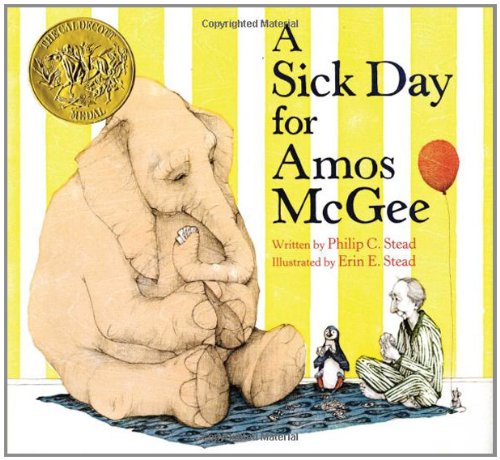
During the Third Reading you will have three different ways to read the story: ~Your child and you may switch roles, with your child reading/retelling and you asking questions. ~Your child and you may alternate “reading”pages. ~You may leave out words to see what vocabulary words your listener inserts. The substitutions may be new vocabulary […]

During the Second Reading, you will: ~read the text. ~ask clarifying questions. ~focus on vocabulary words. *Read the pages before any discussion starts. This won’t be as easy as it sounds with your excited listener sharing thoughts, questions, and connections. Pages 1 – 3: Read the pages. The author has a different way of saying […]

During the First Reading, focus on making inferences and connections with the illustrations. When making inferences there will be two basic questions to ask your listener as you turn the pages: ~What do you see? ~What is happening? These two questions help the brain form inferences, predictions, and conclusions. First, the brain gathers evidence from […]
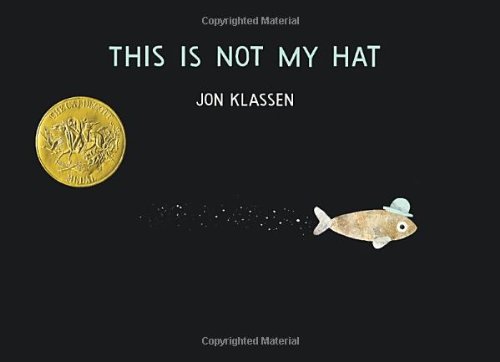
After the Third Reading, information from the first two readings is analyzed. The reader is asked to evaluate, create, and make deeper connections. As a result of the work that the brain has done during the three readings you will see comprehension, personal involvement, and retention of story elements increase. So will your enjoyment of […]

For the Second Reading the focus will be on both the text and a vocabulary word, probably. Research done at both the University of Virginia and Ohio State University was reported in a National Public Radio (www.npr.org) article by Alix Spiegel (May 29, 2012). Ms. Spiegel notes the importance of focusing your child’s attention on […]

During the First Reading you will focus only on the illustrations. There will be two basic questions that you will ask your listener as you turn the pages: ~“What do you see?” ~“What do you think is happening?” These two questions help the brain form inferences, predictions, and conclusions. First, the brain gathers evidence from […]

About This Book: THIS IS NOT MY HAT By Jon Klassen his popular book has two story streams. One stream is through the illustrations where the action in the plot unfolds. The other story stream is through the text where the thoughts of the little “thief” are revealed. Along with the unique relationship between illustrations […]

This sensitive book is a recent Caldecott Award winner for it’s lovely illustrations! However, the loving characters, also, make this a special story. Amos McGee works in a zoo. As Amos McGee’s relationships with the animals at the zoo are revealed, you see that he has many animal friends. Amos meets his zookeeper responsibilities and […]
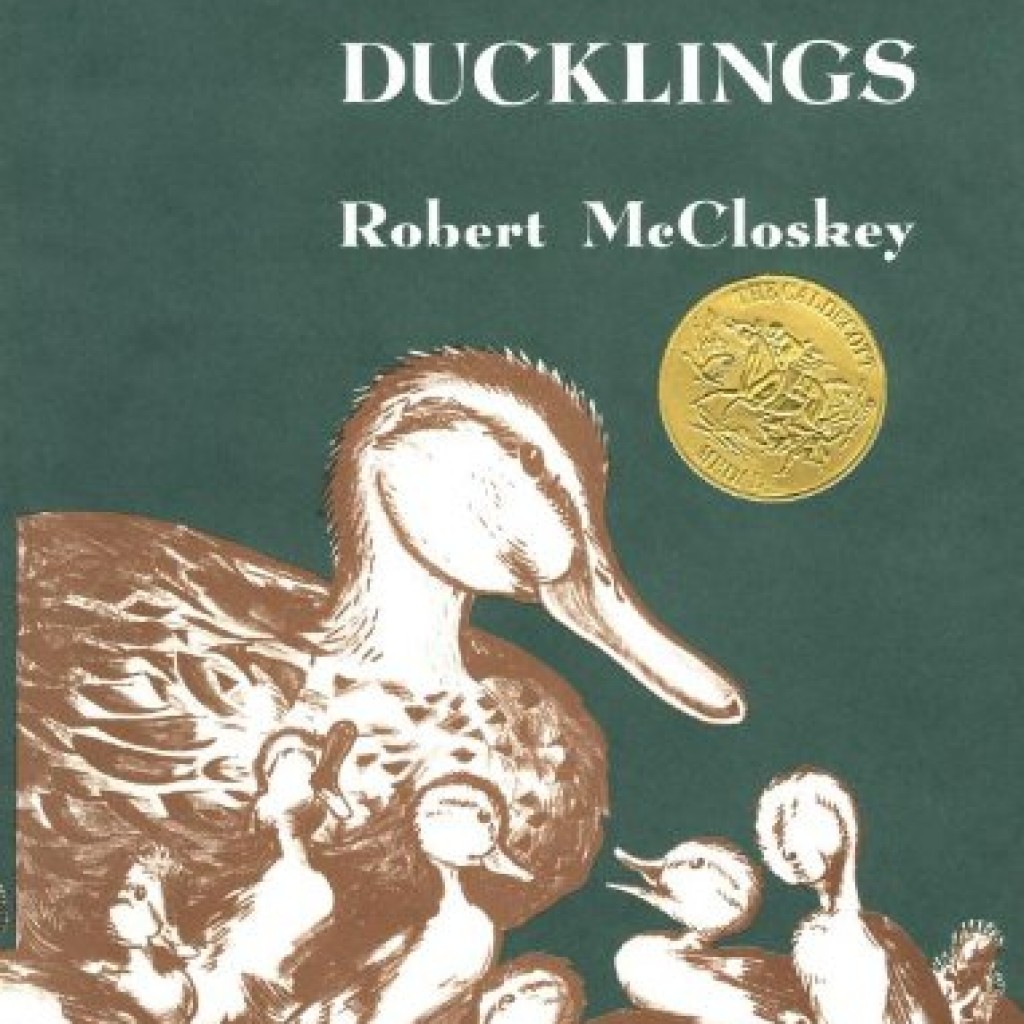
ABOUT THIS BOOK: MAKE WAY FOR DUCKLINGS This classic children’s picture book is older than I am! (Though, not by much.) It is a Caldecott Medal winner for the most distinguished American picture book of 1941. Not only is it a warm story of a father and mother duck taking care of their eight ducklings, […]
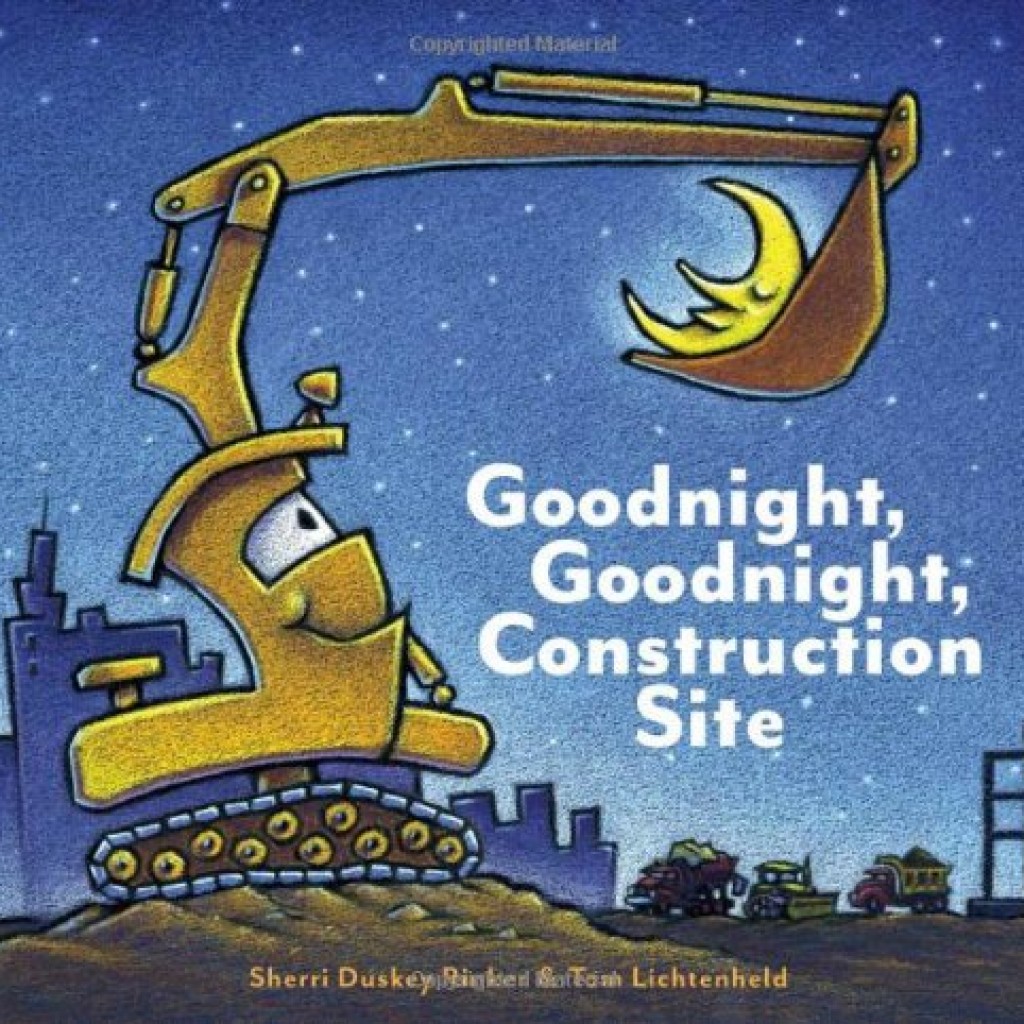
My grandson LOVES cars and trucks. I mean REALLY loves them. Both fiction and informational picture books that have any vehicles are the books he requests repeatedly. When I first read this book, I was so excited. It’s about trucks and big construction machinery, AND it is rich with inferencing opportunities. Most of the thinking […]

ABOUT THIS BOOK: AND THEN IT’S SPRING by Julie Fogliano As I sit wrapped in a blanket listening to the howling wind sending Minnesota temperatures to -40 degrees, I think that I should be writing about A Snowy Day by Ezra Jack Keats. That classic story is about a little boy content to be outside […]

For the Third Reading, here are two suggestions to enhance the listener’s comprehension and help analyze the story: ~ Focus on the rhythm and the rhyming words. Leave out the second rhyming word, and have your child supply it. (Similar to the procedure suggested in the Second Reading.) ~ Dramatize the story. Create different voices for […]

The discussion and activity options focus on analyzing the main idea, theme, character traits, setting and how all of the story elements fit together to increase comprehension, retention, and knowledge of all that is in this marvelous story. During this reading your child and you will read the story all the way through. Three ways […]

As you know, Hank Finds an Egg is wordless. During this reading, you will focus on the details in the illustrations.There are no right or wrong answers to the questions that you pose to your listener in this reading. Since the pages are not numbered, page 1 is the first photograph. Your child will be […]

ABOUT THIS BOOK: HANK FINDS AN EGG by Rebecca Dudley Through the handmade characters posed in forest dioramas, Ms. Dudley has created a miniature world that makes you forget that this story is crafted with paper, clay, wire, fabric, and a camera. Hank’s goodness and the breathtaking settings suggest a story that your child will […]
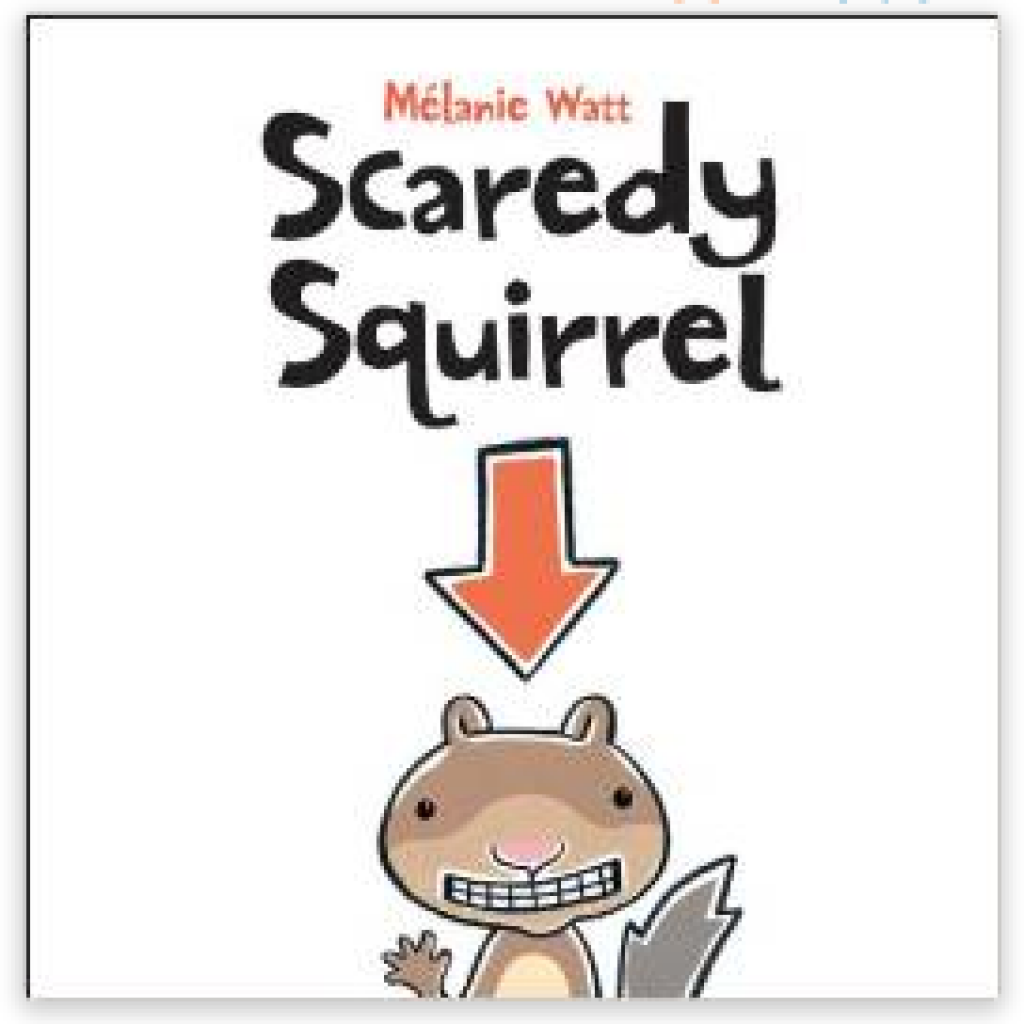
The purpose of this reading is to bring together the information in both the text and the illustrations. The discussion and activity options focus on analyzing the main idea, theme, character traits, setting and how all of the story elements fit together. During this reading your child and you will read the story all the […]

The focus of this reading is the text.There will be opportunities in this reading to connect the information in the illustrations to the information in the text. These connections will help add deeper meaning to the text. *Read the pages before you ask the questions. *Since the pages containing charts and lists have already been […]

To allow the brain to focus on the information in the illustrations, this reading will look only at the illustrations and the information they provide to the reader. There are no right or wrong answers in this reading. If the pages are not numbered, page 1 is the first page of text. Your child will […]

ABOUT THIS BOOK: SCAREDY SQUIRREL by Mélanie Watt “HERE’S THE STORY, IN A NUTSHELL: I NEVER leave my nut tree. It’s way too dangerous out there. I could encounter germs, poison ivy, or sharks.” This is on front flap of the dust jacket. Then, as you look at end pages covered with nuts, you see: […]

My grandchildren love to see every Pixar and Disney movie that comes out. Their recent favorite: Frozen! (Princess Anna reminds me of my granddaughter, Izzie, because she loves her sister through thick and thin 🙂 ) I like to use going to the movies as an opportunity to build my grandchildren’s reasoning skills, because why […]
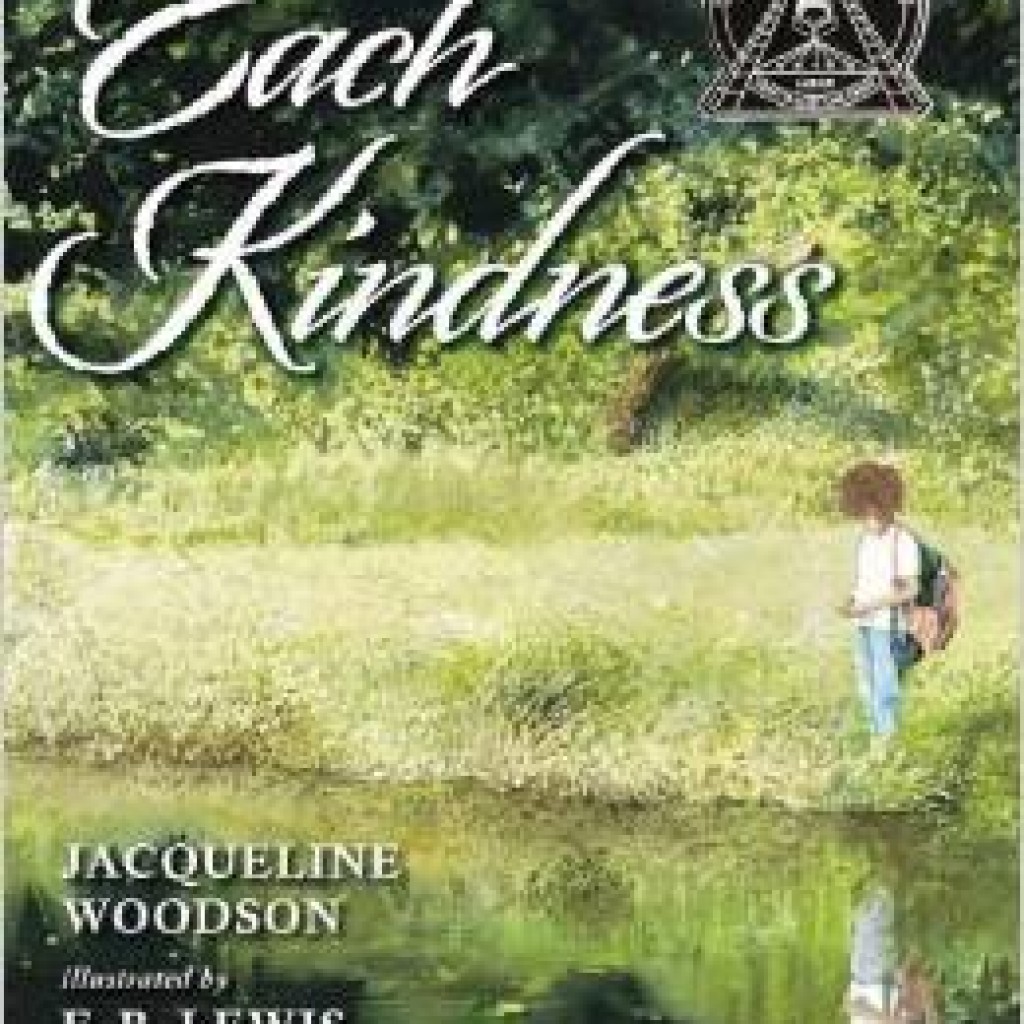
ABOUT THIS BOOK:EACH KINDNESS by Jacqueline Woodson Many of Practickle’s selections are great reads for any child from the three-year-old to the independent reader. However, Each Kindness has a theme that is more likely to resonate with our older readers. This award-winning book was recommended to me by a wonderful kindergarten teacher, Becky McGillivray. The […]

The purpose of this reading is to bring together the information in both the text and the illustrations. The discussion and activity options focus on analyzing the main idea, theme, character traits, setting and how all of the story elements fit together. During this reading your child and you will read the story all the […]
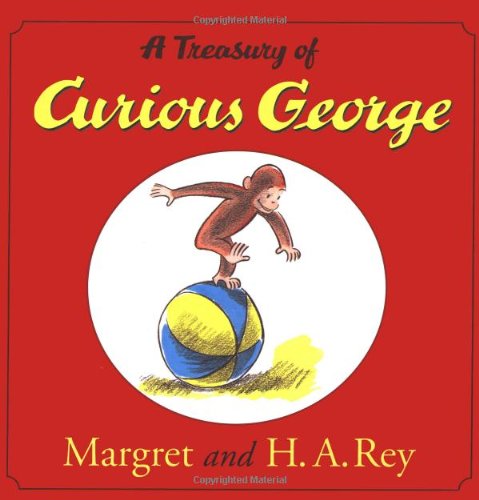
The purpose of this reading is to bring together the information in both the text and the illustrations. The discussion and activity options focus on analyzing the main idea, theme, character traits, setting and how all of the story elements fit together. During this reading your child and you will read the story all the […]
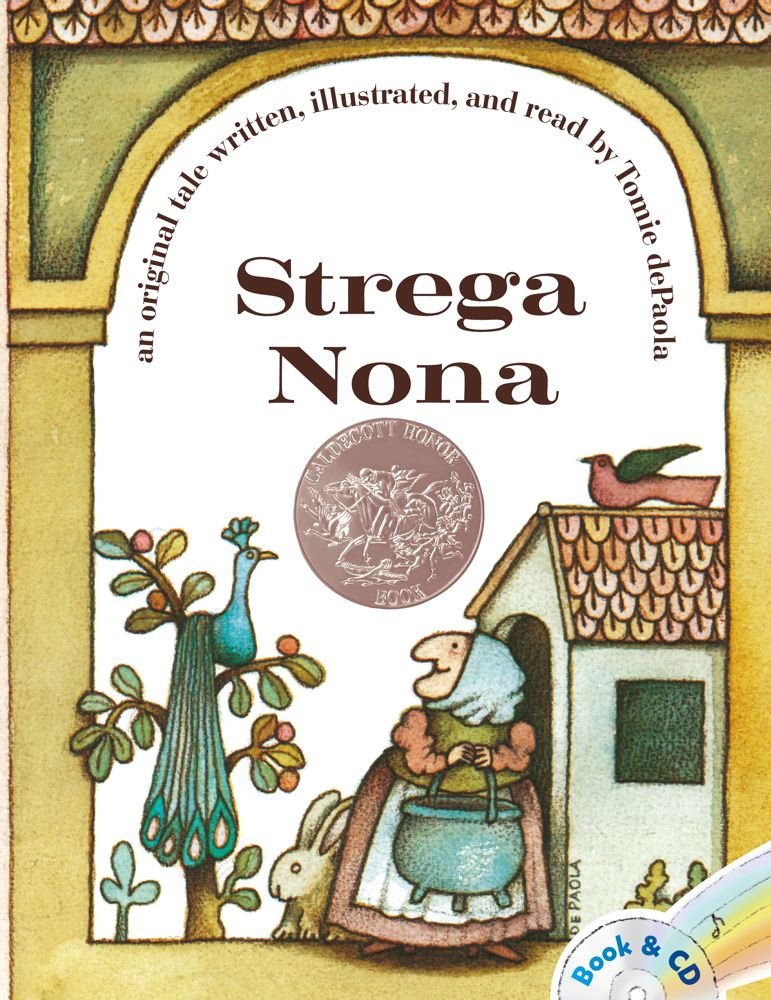
The purpose of this reading is to bring together the information in the text and the illustrations. The discussion and activity options focus on analyzing the main idea, theme, character traits, setting and how all of the story elements fit together. During this reading your child and you will read the story all the way […]

The focus of this reading is the text. Through Tomie dePaola’s many illustrations, he shows you most of the action in the plot. Making these connections between illustrations and plot will help anchor understanding of the plot for the young reader. Remember the questions that you had in the First Reading. The text will answer […]

Page 1: ~Find Strega Nona in the picture. What does she seem to be doing? ~Discuss the setting information. (The setting of a story refers to where the story takes place and when the story takes place.) Does this story seem to be taking place in this country? Is it taking place in the past, […]
ABOUT THIS BOOK: STREGA NONA By Tomie dePaola As a new kindergarten teacher in 1971, I fell in love with Tomie dePaola’s books, and I have continued to love his art work and his wonderful characters. Strega Nona was published in 1975 and was loved immediately (over 38,000 ratings on www.goodreads.com). In 1976, it was […]
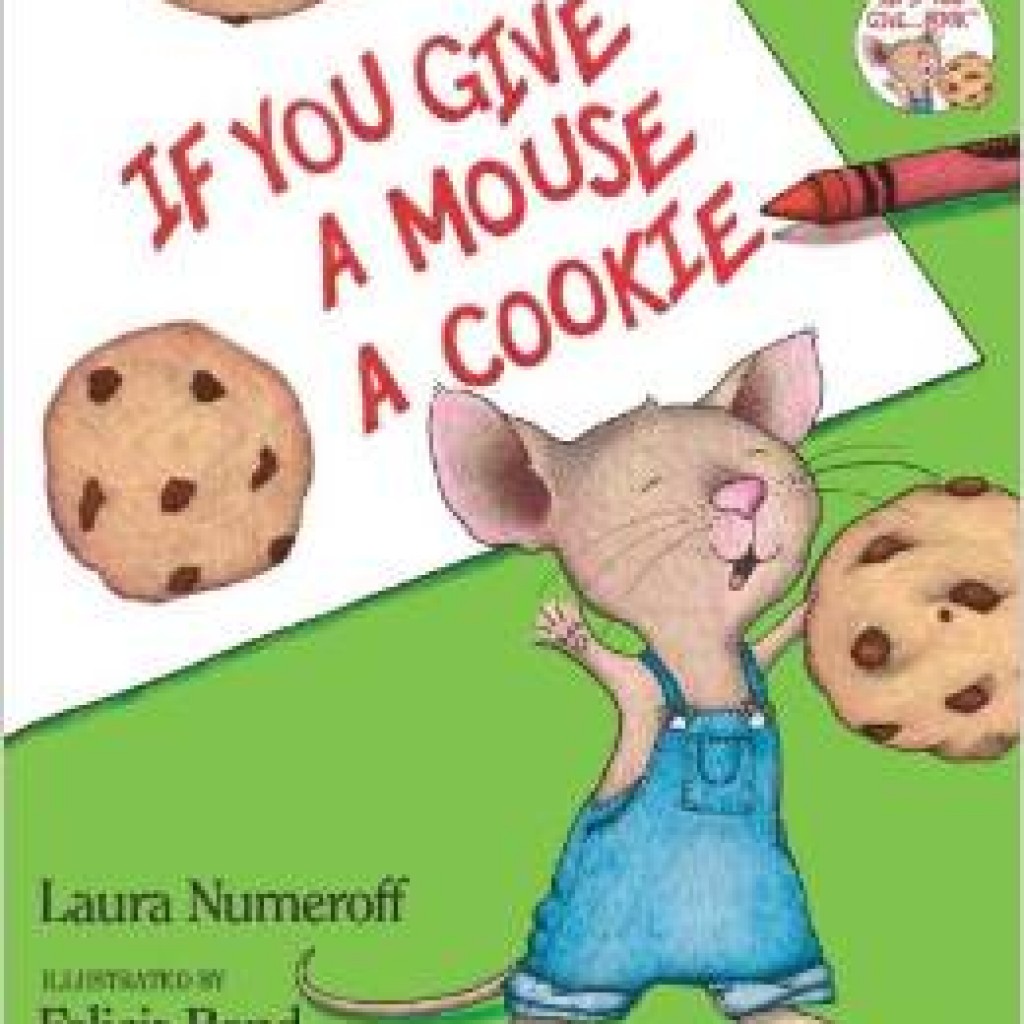
he focus of this reading is the text.There will be opportunities in this reading to connect the information in the illustrations to the information in the text. This will help add meaning to the text. Remember the inferences you made about feelings and possible conversations. Make connections as often as possible between the behavior of […]